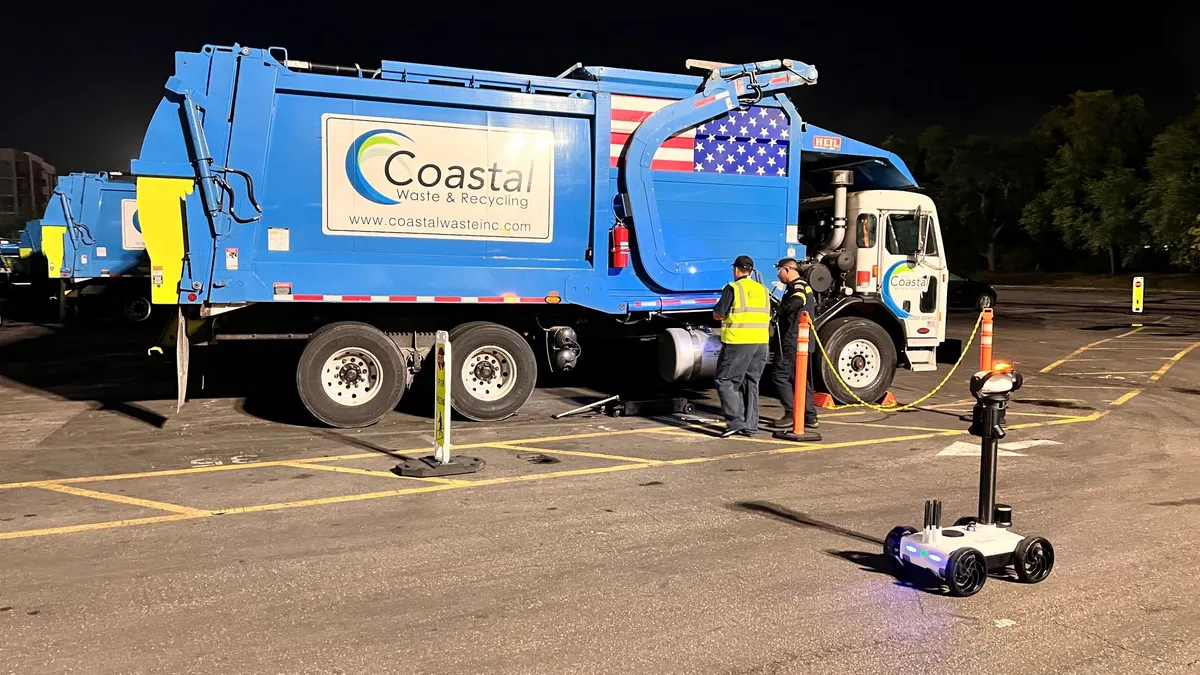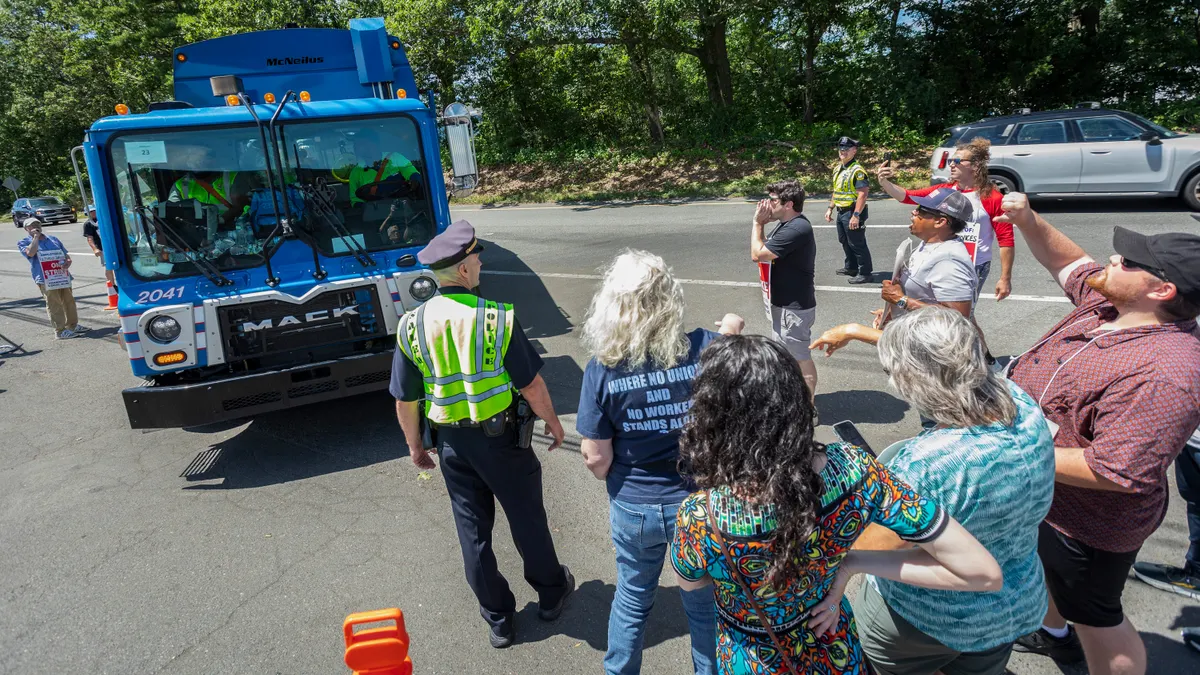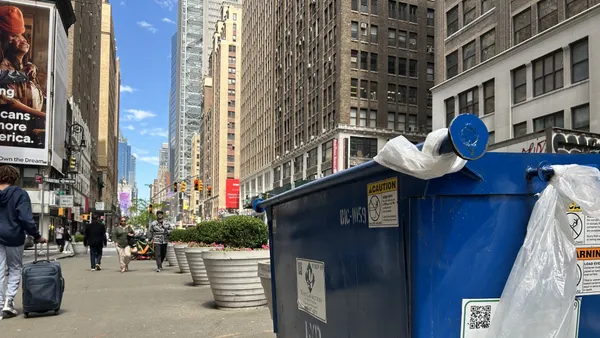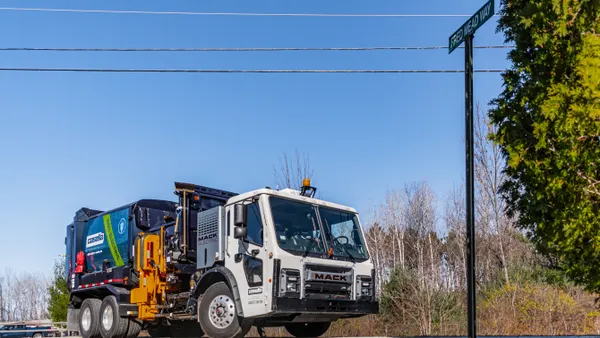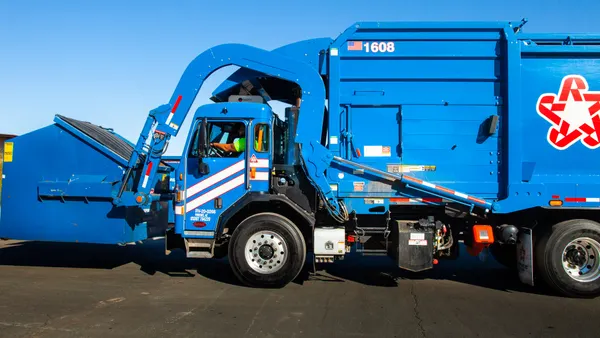Dive Brief:
- Florida-based Coastal Waste & Recycling has added new safety features to its Pompano Beach facility in the form of an autonomous patrolling robot called WatchBot, designed to detect facility fires and other issues.
- Guident, a company that builds AI-powered monitoring and autonomous technology, worked with Coastal to design and build the custom technology. The robot regularly checks truck temperatures to determine if elevated heat indicates a possible battery fire. It also monitors trucks for damage and performs other tasks.
- The project is in its pilot phase, but Coastal and Guident are using data from the robot to decide whether to expand the technology for use at the company’s MRF and transfer station environments, said Patti Hamilton, Coastal’s vice president of brand and culture.
Dive Insight:
Fires at waste facilities and in collection vehicles have long been a safety issue in the industry, leading companies to look for more creative solutions to keep blazes caused by lithium-ion batteries and other items at bay. Such fires have also increased in recent years due to e-cigarettes and improper e-waste disposal.
While robots like the one Coastal is piloting aren’t a common safety solution in the waste industry, it’s one that is already pulling its weight, Hamilton said.
“Coastal has built our company on continual improvement and we are always on the lookout for innovation and technology” to make operations safer, Hamilton said. Its partnership with Guident so far has shown “economic, productivity, and safety advantages,” in part because of how customized the robot is for Coastal’s particular fleet and operations, she said.
Guident’s lab is located in Boca Raton, the next city over from Coastal Waste’s Pompano Beach location. That allowed the two companies to work closely together to build a technology that would specifically fit Coastal Waste’s needs, said Harald Braun, Guident’s CEO.
Team members from Coastal helped build a mock-up of a truck and a typical load so Guident could test the robot’s thermal detection abilities and refine its alarm system. “They were insanely dedicated to getting it right and worked so closely with us you couldn’t tell who worked for which company,” Braun said.
Hamilton said the WatchBot also lightens the workload for employees so they can spend more time with customers. Beyond thermal detection, the robot can also monitor gates at night, determine whether staff members are wearing the correct personal protective equipment, and perform other “time-consuming and menial tasks” that are nonetheless important for safety, she said.
In the future, Coastal hopes to add more features onto WatchBot’s capabilities, Hamilton said, but that wishlist is in the works. Braun said some possible options could include tire pressure checks or other fleet-related tasks.
Guident’s WatchBots have also been customized and configured for other types of customers, particularly in the oil and gas industry as well as for several Florida airports that have adopted the technology to monitor runways for hazards such as wildlife.
Braun said the company hadn’t considered using WatchBot in waste facility applications until meeting with Coastal Waste. Now that Guident has tested its robotics’ capabilities to monitor for battery fires and fleet-specific needs, the company plans to expand its offerings to other waste business needs, he said.
“Now that we’ve learned about how serious these battery fires are, we know we can help solve this issue before it happens,” he said.


